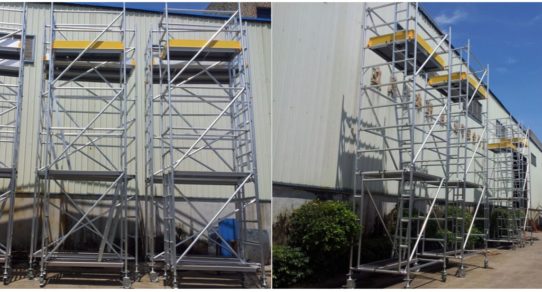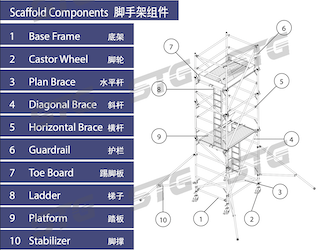When planning a construction project, one important decision to make is whether to rent or purchase scaffolding. Both options have their advantages and considerations, depending on the scope, duration, and budget of your project. In this article, we will explore the key factors to consider when deciding between renting or purchasing scaffolding. By weighing the pros and cons of each approach, you can make an informed decision that aligns with your construction needs and objectives.
Factors to Consider When Renting Scaffolding
- Project Duration and Frequency
Renting scaffolding is an ideal choice for short-term projects or those with irregular scaffolding needs. If your project lasts a few weeks or months and you don’t anticipate using scaffolding frequently, renting provides a cost-effective solution without the long-term commitment.
- Cost Considerations
Renting scaffolding allows you to avoid the upfront costs associated with purchasing. It eliminates the need for storage, maintenance, and potential depreciation expenses. Renting also provides flexibility, as you pay only for the duration of your project, saving money in the long run for projects with limited scaffolding requirements.
- Access to Advanced Equipment
Renting scaffolding gives you access to the latest and most advanced equipment. Rental companies often update their inventory to meet safety regulations and industry standards. By renting, you can benefit from using modern scaffolding systems that enhance worker safety and improve productivity.
- Professional Support and Maintenance
Reputable scaffolding rental companies provide professional support and maintenance services. They ensure that the equipment is in excellent condition, inspected regularly, and meets safety standards. This eliminates the need for you to worry about maintenance and repairs, allowing you to focus on your construction project.
Factors to Consider When Purchasing Scaffolding
- Long-term Projects or Frequent Use
If you have ongoing or frequent scaffolding needs, purchasing may be a more cost-effective option in the long run. Owning scaffolding provides convenience and accessibility, eliminating the need to coordinate rentals for every project. It is a viable choice for companies with a steady stream of construction projects or contractors working on multiple sites simultaneously.
- Customization and Adaptability
Purchasing scaffolding allows for customization and adaptability to suit your specific project requirements. You can modify the scaffolding system, add components, or tailor it to fit unique site conditions. This level of customization provides flexibility and ensures that the scaffolding perfectly aligns with your construction needs.
- Cost Recovery and Investment
Investing in scaffolding enables cost recovery over time. Instead of paying rental fees repeatedly, owning scaffolding allows you to utilize it for multiple projects, potentially leading to significant savings in the long term. Additionally, if the market demand for scaffolding is high in your area, you can consider renting out your equipment to generate additional revenue.
- Familiarity and Efficiency
Using your own scaffolding system promotes familiarity and efficiency among your workers. They become accustomed to the specific equipment, leading to improved productivity and reduced setup time. Additionally, you have full control over the maintenance and upkeep of the scaffolding, ensuring it remains in excellent condition for optimal performance.
Conclusion
Deciding whether to rent or purchase scaffolding depends on various factors such as project duration, frequency of use, cost considerations, customization needs, and long-term goals. Renting scaffolding offers flexibility, access to advanced equipment, and professional support, while purchasing provides long-term cost savings, customization options, and convenience. Kim Sing Scaffolding understands the diverse needs of construction projects in Singapore and offers both rental and purchase options to cater to your specific requirements. By carefully assessing your project needs and considering the factors discussed in this article, you can make an informed decision that ensures efficient and cost-effective scaffolding solutions.






